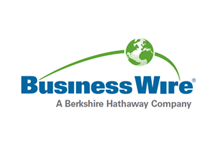Insights on the Fiber Reinforced Polymer Composites Global Market to 2026 - Featuring SGL Carbon, DowAksa and Owens Corning Among Others - ResearchAndMarkets.com
The "Fiber Reinforced Polymer (FRP) Composites Market - Forecasts from 2021 to 2026" report has been added to ResearchAndMarkets.com's offering.
The fiber reinforced polymer (FRP) composites market is projected to grow at a CAGR of 7.32% to reach US$375.100 billion by 2026, from US$228.761 billion in 2019. FRP stands for fiber-reinforced polymer, which is a composite material made up of a polymer matrix reinforced with fibers such as carbon, glass, aramid, basalt, and others.
FRP composites are non-corrosive, lightweight, and have high specific strength and stiffness, and they may be easily manufactured and customized to suit particular performance requirements. Many expensive metals have been substituted in industrial process equipment such as pipes, ductwork, tanks, and reaction vessels due to the unique features of FRP composite materials such as corrosion resistance. A polymer resin is combined with strong reinforcing fibers to create FRP composite materials.
The two most common production techniques for FRP composite materials are pultrusion and vacuum infusion. Polyester, vinyl ester, polyurethane, epoxy, and other resins are often used in FRP composite materials, whereas aramid, glass, and carbon are commonly used fibers. The market for fiber-reinforced polymer (FRP) composites is growing due to the increased demand for corrosion-resistant materials for various applications.
The transition from ferrous and nonferrous metals to FRP composites is also boosting demand for these materials in a variety of sectors. Increasing R&D efforts by leading industry players to create bio-based fiber reinforced polymers (FRPs) derived from a variety of renewable resources would support the growth of the FRP composites market throughout the forecast period. When utilized in the automotive and aerospace sectors, the developed FRP composites are lightweight and high-strength composite materials that offer potential energy reduction while also decreasing emissions owing to the vehicles' reduced total weight. Due to the wide range of manufacturing and building uses, contractors and architects prefer FRP composite materials to metal and timber materials.
Growth Factors
Increasing demand in the construction sector will fuel the market growth
One of the major reasons for the growth of the fiber reinforced polymers (FRP) composites market is the growing demand for fiber-reinforced polymer (FRP) composites in the construction sector. Engineered materials comprised of polyester or epoxy resin reinforced with fiber are known as fiber-reinforced polymer (FRP) composites. The finished FRP product is a strong, durable, thin, and lightweight material with the added benefit of easy installation.
For concrete buildings, FRP bars are utilized as interior reinforcement. FRP bars, sheets, and strips are used to reinforce concrete, masonry, wood, and steel constructions. Fiber-reinforced polymers are utilized to build specific constructions that need to be electrically neutral. The growing construction activities and the increasing infrastructural projects in developing nations especially in the Asia Pacific region will boost the market demand for these fiber-reinforced polymers (FRP) composites. As a result, demand for fiber-reinforced polymer (FRP) composites is projected to rise throughout the forecast period, owing to rising applications in the construction industry, particularly in the Asia-Pacific region.
Restraints
The high cost of FRP composites is a key stumbling block to the market's expansion
A major restraint in the growth of fiber reinforced polymer composites market is the high cost associated with fiber reinforced polymer (FRP) composites. Because traditional processing techniques for fabricating composites, such as wet hand lay-up, autoclave, and resin transfer molding, need a large quantity of specialized work to cut, stack, and consolidate into a finished component, labor costs are likewise expensive.
FRPs are used in applications where performance takes precedence above cost. Chemical storage FRP tanks, subterranean fuel storage FRP tanks, blending FRP tanks, and other applications may all benefit from the fundamental characteristics of FRP composites. The sole constraint limiting market expansion is the price of the product. However, certain attempts have resulted in FRP composites being more affordable.
Segmentation:
By Type
- Aramid Fiber Reinforced Polymer (AFRP) Composites
- Glass Fiber Reinforced Polymer (GFRP) Composites
- Basalt Fiber Reinforced Polymer (BFRP) Composites
- Carbon Fiber Reinforced Polymer (CFRP) Composites
- Others
By Application
- Automotive
- Electronic
- Construction
- Defense
- Others
By Geography
- North America
- USA
- Canada
- Mexico
- South America
- Brazil
- Argentina
- Others
- Europe
- UK
- Germany
- France
- Italy
- Others
- Middle East and Africa
- Saudi Arabia
- South Africa
- Others
- Asia Pacific
- Japan
- China
- India
- Indonesia
- South Korea
- Taiwan
- Thailand
- Others
Companies Mentioned
- American Fiberglass Rebar
- Mitsubishi Chemical Corporation
- SGL Carbon SE
- DowAksa
- Engineered Composites Ltd
- TUF-BAR
- Owens Corning
- Advanced Composites Inc.
- Aeron Composite Pvt Ltd
- Dextra Group
For more information about this report visit https://www.researchandmarkets.com/r/a296ez
View source version on businesswire.com: https://www.businesswire.com/news/home/20220330005664/en/




